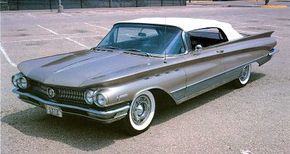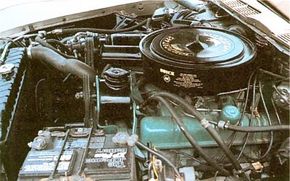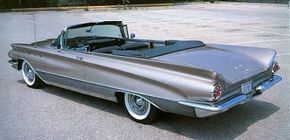If the 1950s had been a decade of dazzle, the 1960s started out by turning down the volume -- at least with the 1960 Buick Electra and the GM fold.
Big changes had been the rule for the 1959 Buicks, with their huge canted "Delta wing" fins and slanted quad headlights. Some considered it the most dramatic Buick of all -- and a sharp contrast to the garish 1958 with its unexcelled load of chrome doodads.
Advertisement
The new model names and body styles introduced for 1959 continued this year: low-price LeSabre, sporty (more or less) midrange Invicta, luxury Electra, and even bigger Electra 225. That latter nameplate denoted the overall dimensions of the long-deck model, which stretched 4.7 inches beyond an ordinary-size Electra.
Basic appearance was similar to 1959, with its then-new long-deck, thin-section roofline, and vast glass area. Changes this year were just extensive enough to soften some of the more frivolous excesses and sharper edges.
A more subdued grille was made up of concave vertical bars -- quite a change from the bulky pattern of chrome blocks that marked the 1959 version -- and quad headlights now sat side by side.
Tailfins were comparably canted and integrated into the overall profile, their upper line extending all the way to the windshield. This time around, though, they sat tighter in, helping to highlight rather than conflict with the deeply sculptured bodysides.
Hardtop sedans came in two distinct roofline styles: a six-window Riviera with curved rear and triangular rear-quarter panes; or a four-window with flat roof, slim pillars, and huge panoramic wraparound back window.
Traditionalists got something they hadn't seen for several years: VentiPorts. Yes, the row of "portholes" that had first identified Buick fenders in 1949 was back, albeit in modified form.
To learn more about the 1960 Buick Electra engine, transmission, and styling, go on to the next page.
For more information on cars, see:
- Classic Cars
- Muscle Cars
- Sports Cars
- Consumer Guide New Car Search
- Consumer Guide Used Car Search
Advertisement



